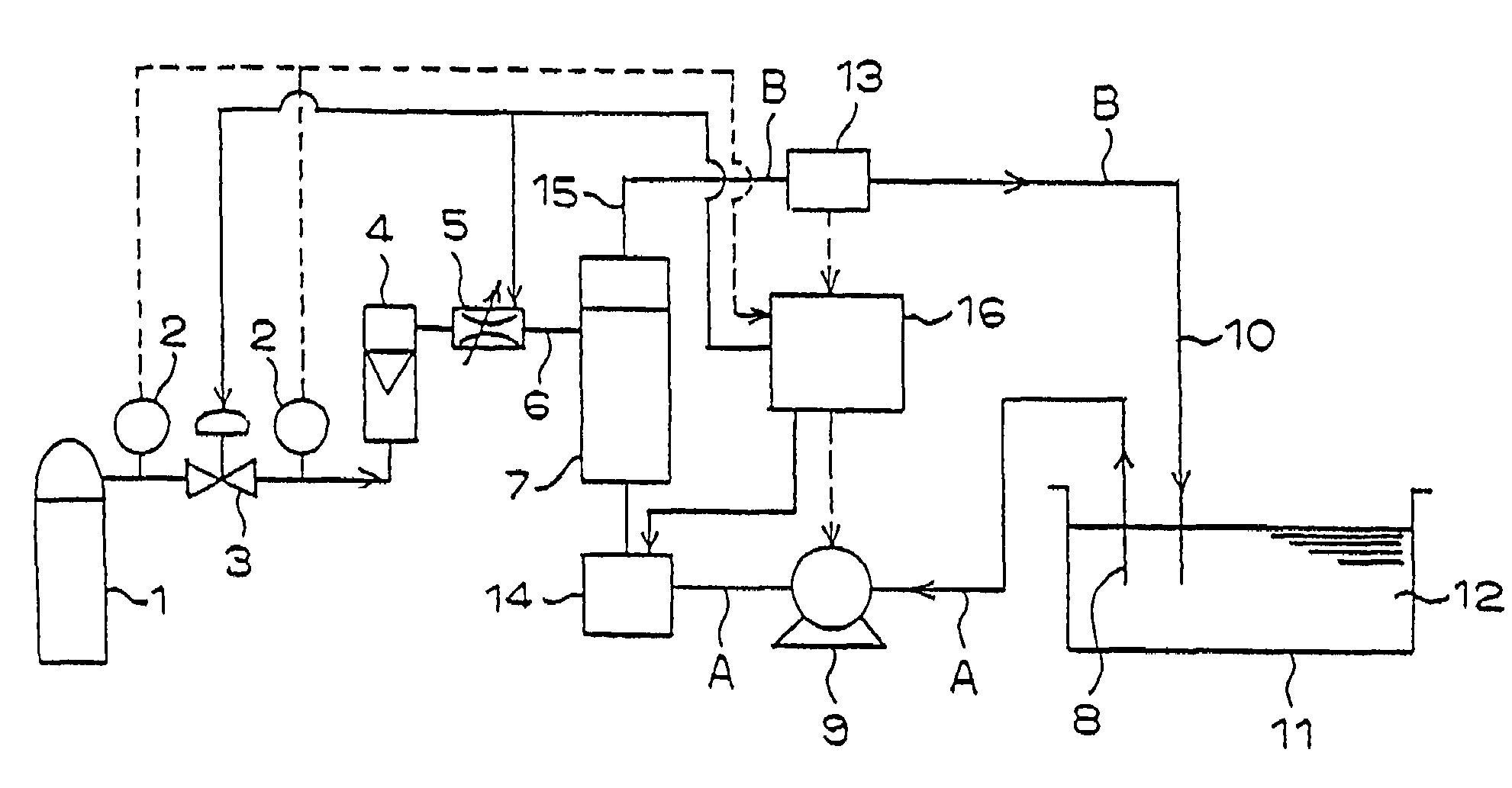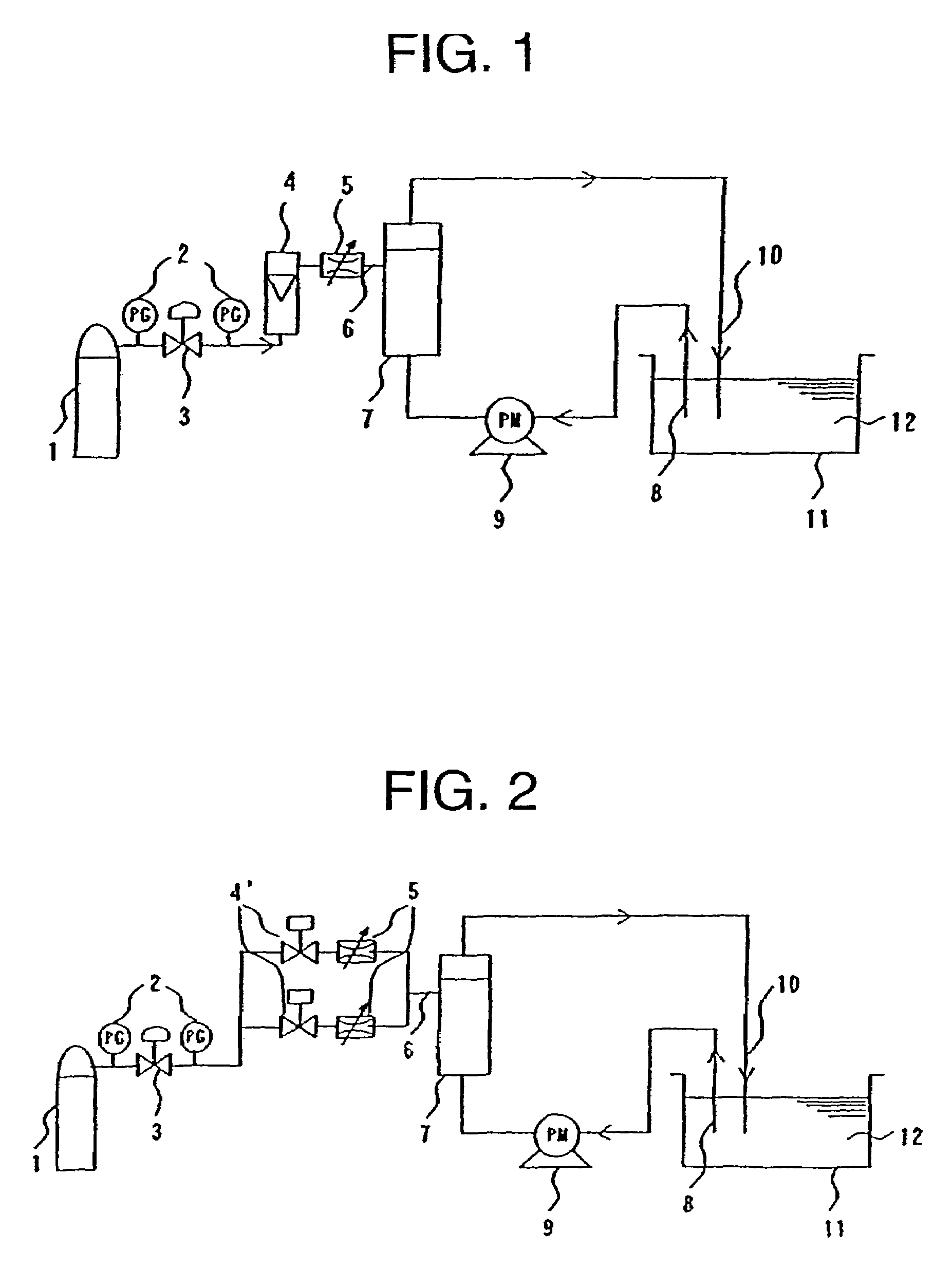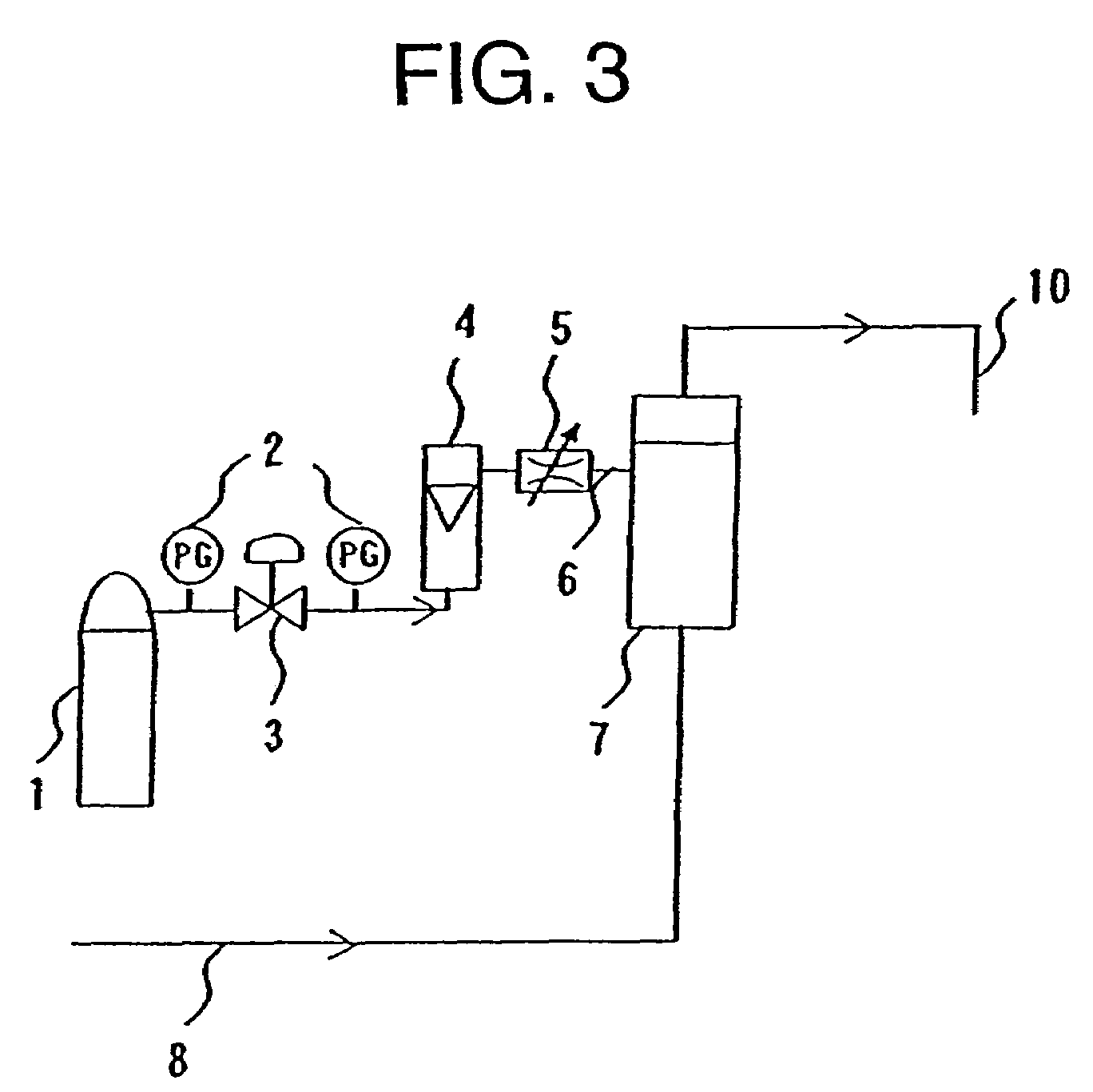Device and method for manufacturing carbonated spring and carbonic water, control method for gas density applied thereto and membrane module
a technology of carbonated springs and carbonic water, applied in the direction of flow mixers, volume measurement, magnetic resonance measurement, etc., can solve the problems of increasing the amount of consumption of carbon dioxide gas, inability to secure the same carbon concentration, and the ability to add dioxide gas, etc., to achieve the effect of easy manufacturing
- Summary
- Abstract
- Description
- Claims
- Application Information
AI Technical Summary
Benefits of technology
Problems solved by technology
Method used
Image
Examples
examples
[0168]Hereinafter, the present invention having the diversified embodiments will be described more specifically with reference to the examples.
[0169]First, an example of the carbon dioxide gas adding membrane module applied to the device of the present invention will be described specifically.
(Experiment No. 1)
[0170]With polymer blend composed of styrene base thermoplastic elastomer and polypropylene (made by DAI-NIPPON PLASTICS Co., Ltd., product name MK resin MK-2F (Tg=−35° C., composition ratio: (S)-(EB)-(S) tri-block copolymer 50 mass portion, composed of polymer (EB) obtained by hydrogenating styrene polymer (S) and butadiene polymer, as styrene base thermoplastic elastomer and atactic polypropylene 50 mass portion as polyolefin) as a material for a nonporous layer and polyethylene (made by TOSOH CORPORATION, product name: NIPORON HARD 5110) as a material for a porous layer, a three-layered composite hollow yarn membrane shown in FIG. 5 having the outside diameter of 300 μm, th...
experiment no 4
(Experiment No 4)
[0189]Carbonated spring was produced with the circulation type device shown in FIG. 1. The carbon dioxide gas pressure was controlled to 0.4 MPa with a pressure control valve As a flow meter, an electronic mass flow meter (CMS0020) made by Yamatake Hanewel Co., Ltd. was used and as a flow control valve, a mass flow control valve (MODEL 2203) made by KOFLOK K.K. was used to control the carbon dioxide gas flow rate to 1.0 l / min (converted under 20° C.). As a dissolver, non-used hollow yarn module product made with a three-layered composite hollow yarn membrane (made by Mitsubishi Rayon Co., Ltd.) whose membrane area was 0.6 m2 was used. Hot water at 40° C. was poured into the bath by 10 l and the hot water was returned to the bath by 5 l every minute by means of a suction pump.
[0190]Table 2 shows the result obtained 10 minutes after circulation. The first time in Table 2 indicates the result collected first in the experiment and the second time indicates the result co...
experiment no 7
(Experiment No 7)
[0194]Carbonated spring was produced with the one-pass type device shown in FIG. 3. The carbon dioxide gas pressure was controlled to 0.4 MPa with the pressure control valve. With the electronic mass flow meter CMS0020 made by Yamatake Hanewel Co., Ltd. as a flow meter and the float controller MODEL 2203 made by KOFLOK K.K. as a flow control valve, the carbon dioxide gas flow rate was controlled to 5.0 l / min (converted under 25° C.).
[0195]A hollow yarn module produced with the three-layered composite hollow yarn membrane (made by Mitsubishi Rayon Co., Ltd.) whose membrane area was 2.4 m2 was used as a dissolver. Water at 40° was fed to the dissolver at 5 l / min. Table 3 shows the result thereof. Carbon dioxide gas concentration was stabilized about two minutes after water was fed first.
(Experiment No. 8)
[0196]The flow control valve of Experiment No. 7 was opened to control the carbon dioxide gas supply amount with a pressure. The pressure was controlled to 0.28 MPa. ...
PUM
 Login to View More
Login to View More Abstract
Description
Claims
Application Information
 Login to View More
Login to View More - R&D
- Intellectual Property
- Life Sciences
- Materials
- Tech Scout
- Unparalleled Data Quality
- Higher Quality Content
- 60% Fewer Hallucinations
Browse by: Latest US Patents, China's latest patents, Technical Efficacy Thesaurus, Application Domain, Technology Topic, Popular Technical Reports.
© 2025 PatSnap. All rights reserved.Legal|Privacy policy|Modern Slavery Act Transparency Statement|Sitemap|About US| Contact US: help@patsnap.com



